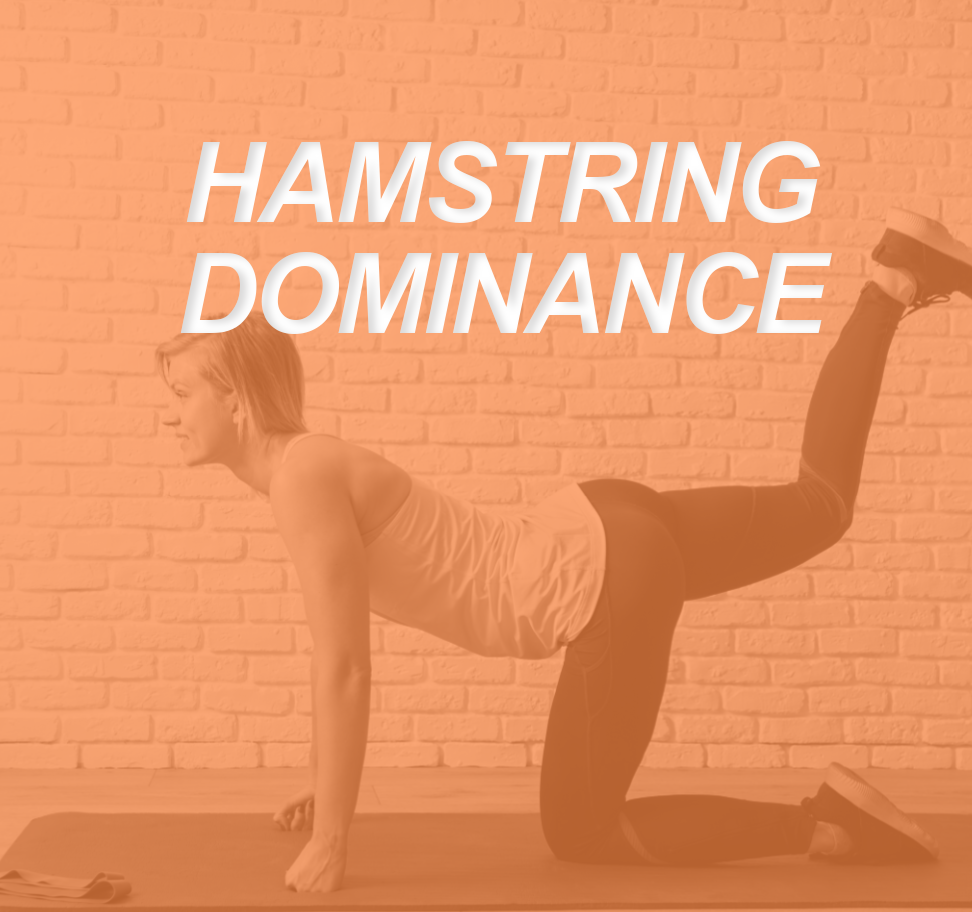Most trainers understand that many clients have “sleepy glutes” that need to be woken up and activated properly in order to perform basic exercises without injury or compensation. A properly firing glute complex stabilizes the hip and produces power in ideal measure. But this begs the question: If the glutes aren’t firing properly during a movement like a squat, what on Earth is permitting the movement to take place if not the glutes? Let’s discuss lumbar and hamstring dominance.
Common Compensatory Actions for Gluteal Engagement
As is often the case with faulty movement patterns, there are muscular imbalances and compensations that occur to make a movement happen. In the case of poorly firing gluteal muscles the most likely muscles to perform “hip extension” without much gluteal involvement are the hamstrings and the lumbar paraspinal muscles.
Lumbar Paraspinal Compensation
The client with increased lumbar lordosis is expected to have weak and lengthened glutes. This client is already in lumbar extension before descending into a squat or hinge movement. Such constant and excessive lumbar extension with likely exhaust those tiny muscles and reinforce the lack of engagement in the gluteals. When this client folds forward into a hinge, the tonicity of the lumbar paraspinals are visible, and while returning to start technically involves hip extension at the joint, the degree of muscle recruitment is greatly diminished. This client will likely complain about low back pain.
Hamstring Dominance
More than likely, the individual with hamstring dominance will exhibit overdevelopment in the hamstring complex relative to the glutes. Since the hamstrings cross the hip joint, they are recruited to assist in hip extension as synergists, secondary to the glutes. However, if the glutes are not properly recruited, the hamstrings will fire first and perform both hip extension and stabilization of the hip—a job these muscles are not well equipped for. The size and thickness of the gluteus maximus is perfectly designed for such force generation that the longer, more sinewy hamstrings are not.
Assessing Lumbar and Hamstring Dominance
To determine if your client indeed suffers from lumbar and/or hamstring dominance, have the client lie prone on the floor, with head relaxed. You must look very intently at your clients muscular engagement for the timing of the following: Instruct the client to slowly lift a leg of the ground. Watch carefully for which muscles engage first. If you see the hamstring tense up and nothing happening in the glutes at all, that is a clear indication of hamstring dominance.
If the hamstring fires a second before the glutes, but you do note glute tension, that is still hamstring dominance.
Finally, watch the low back. If there is increased spinal extension or dimpling in the low back upon the attempt to lift the leg, the paraspinal muscles are recruited for hip extension.
How to Properly Activate Glutes
In order to reduce synergistic dominance of hamstrings and lumbar paraspinals like erector spinae and wake up sleepy glutes, you first have to calm down the overactive muscles.
- Release: With a foam roller or your favorite massage therapist, release the overactivity in the hamstrings, adductors, and hip flexors. When these muscles are overactive they are likely to continue to inhibit the action of the glutes
- Lengthen: You are wasting your time releasing short muscles that you don’t immediately stretch to lengthen. Static stretches held for a minimum of 30 seconds to a maximum of 2 minutes will calm down the overactivity and help restore those muscles to an optimal length-tension relationship.
- Activate: Time to focus on the glutes! It’s most helpful to do simple exercises (not compound) at first to isolate the muscle you want to activate. For most people, the first step is lying prone with legs together and simple squeezing the glutes together as in “cracking a walnut” as I like to say. Once they can identify the contraction in the glutes, then you can move them on to more complex movements, such as bridges and leg lifts.
- Integrate: Once the client can successfully recruit their glutes and timing is optimal, you may increase the complexity of the movements to involve more joints, such as squats and banded lateral walking.
As you will learn in your personal training journey, there are few bodies that are perfectly balanced. And while we may never get each of our clients to achieve optimal muscular balance and posture, we have to keep working towards that goal to not only improve performance, but to reduce risk of injury and help our clients to become more attuned with their bodies.
References
https://www.thestudentphysicaltherapist.com/featured-articles/are-you-hamstring-dominant
https://sbcoachescollege.com/hamstring-dominance-101-what-it-is-and-what-to-do/



